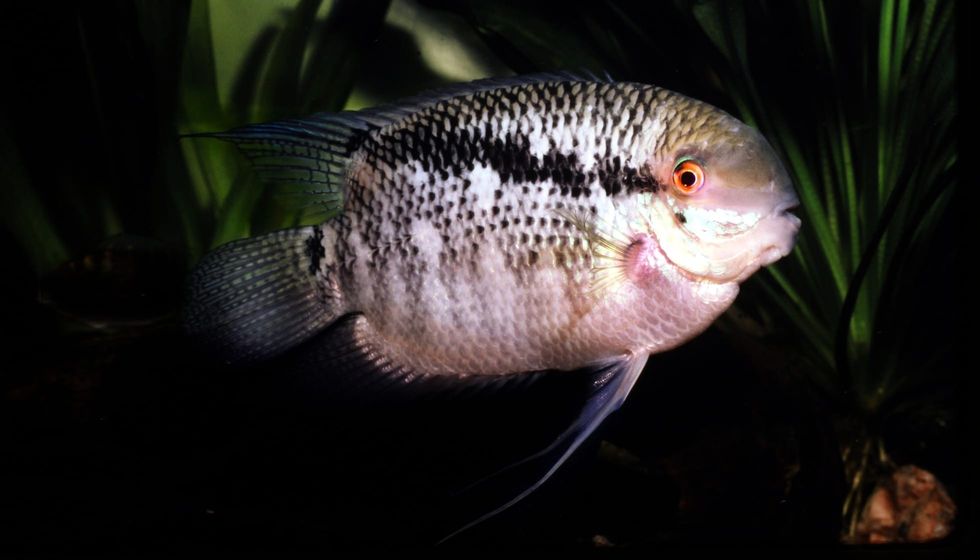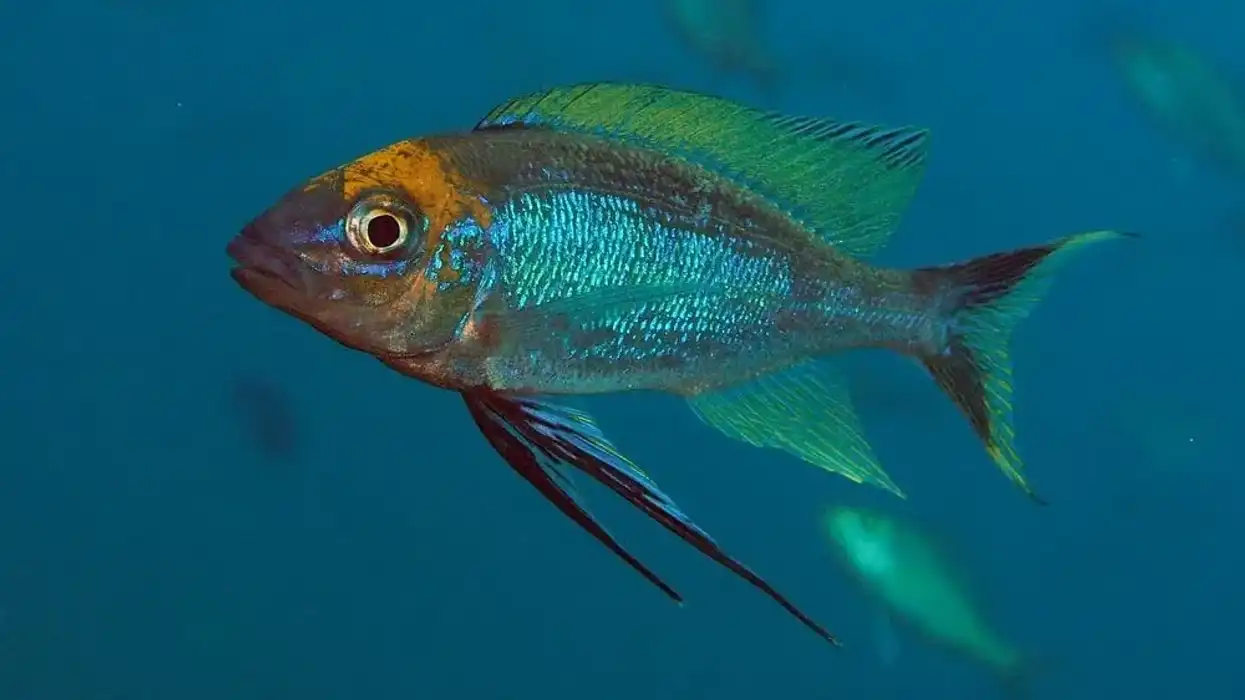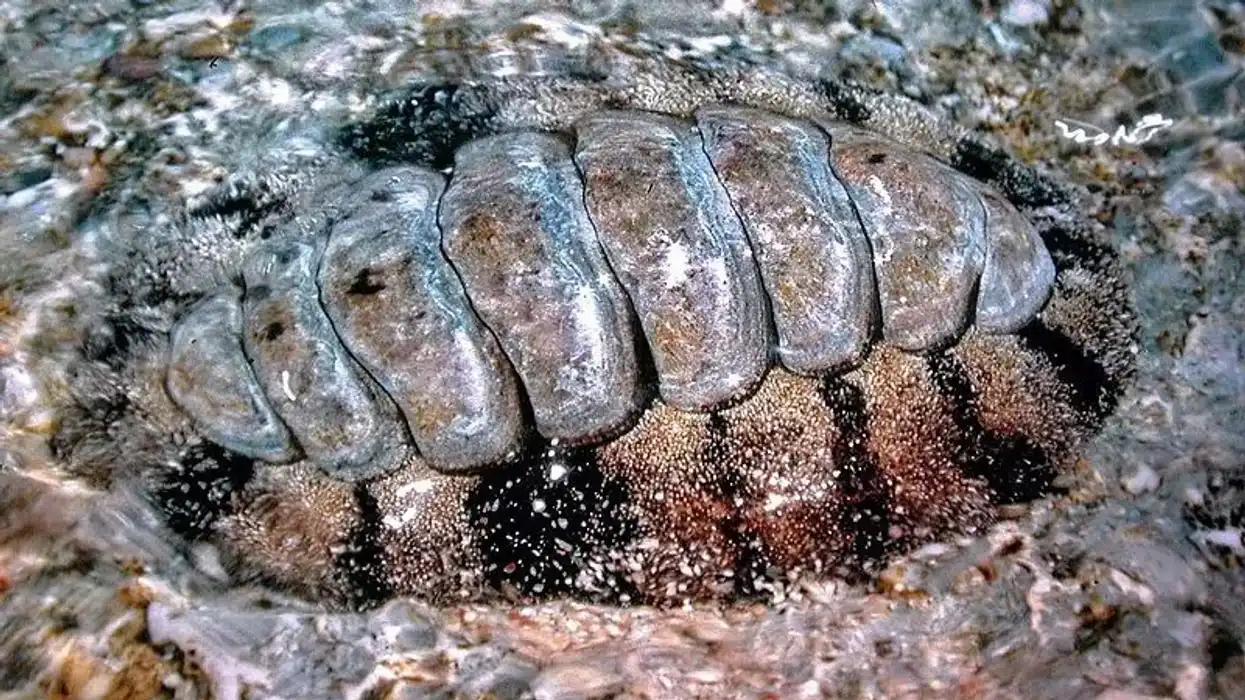The flag cichlid, (Mesonauta festivus), also known as festivum, is a member of the large cichlid family and is one of the most common species of fish that are found worldwide in community tanks or aquarium setups.
These fish are native to the continent of South America and are taken from their native habitats and sold in the pet trade market which plays a great part in the economy of the countries they are found in.
Like most cichlids, the flag cichlid is a peaceful fish that can be semi-aggressive in certain situations and are fairly easy to care for and will be a great addition to your tank setup if you are a novice aquarist.
Hopefully, this fish will continue to exist on a large scale and will never be close to being a concerned fish on the population count.
For more relatable content, check out these channel catfish facts and rainbow trout facts for kids.
Flag Cichlid Interesting Facts
What type of animal is a flag cichlidd?
A flag cichlid (Mesonauta festivus) is a small and peaceful free-swimming freshwater tropical fish species that is native to South America.
These small, semi-aggressive fish are related to the many cichlids that are great aquarium fish like the convict cichlid (Amatitlania nigrofasciata), Texas cichlid (Herichthys cyanoguttatus), dwarf flag cichlid (Laetacara curviceps), red-bellied flag cichlid (Laetacara dorsigera), and the twin spot flag cichlid (Aequidens metae).
What class of animal does a flag cichlid belong to?
Flag cichlids belong to the Actinopterygii class of animals. All wild and domesticated fish belong to the Actinopterygii class.
How many flag cichlids are there in the world?
The population count of these fish is tough to put into an exact number as flag cichlids are one of the most common tropical fish from South America that are part of the trade industry. Flag cichlids are taken from their native range and are traded worldwide.
The breeding and spawning of these fish in a controlled community aquarium or tank setup helps increase the population of these fish species.
Where does a flag cichlid live?
Flag cichlids are of South American origin and are native to Brazil, Paraguay, Bolivia, Peru, Jamari. They can easily be found in rivers, lakes, and streams.
What is a flag cichlid's habitat?
In their natural wild habitat, these peaceful fish can be found swimming around in slow-moving water as well as in white and blackwaters in rivers, lakes, and streams.
Dark, muddy water is the preferred habitat as it provides ample good water conditions that provide these fish with great hiding places thanks to the dense vegetation, marine plants, and the muddy terrain that protects the community from predators.
Who do flag cichlids live with?
Flag cichlids are peaceful community tanks or aquarium fishes and are able to get along with other species of fish, even fish that are smaller than them.
These tropical fish will enjoy the presence of other fish but you should keep in mind that the flag cichlid with neon tetras are a bad match as the flag cichlid will eat the tetra as they see them as a feeding competitor.
Large fish should not be kept in community tanks with flag cichlids as their species profile is a direct threat to the small flag cichlids.
How long does a flag cichlid live?
Not much is known about the lifespan of the flag cichlids in their wildlife habitat.
Their lifespan in captivity is around 10 years and can be extended with proper care and a well-prepared diet plan consisting of small vegetable pieces, plants, frozen food like shrimps, and worms.
In order to keep your cichlids free of disease, it is recommended to keep a check on the temperature and water conditions as an unfavorable temperature and sudden water changes in your tank or aquarium might affect your cichlid's breeding and peaceful nature.
How do they reproduce?
In the wild, during the breeding season, the male and female cichlids will pair up and form a monogamous bond early in their lives. When the female is ready for breeding, she will lay 100-500 eggs on plants or a flat stone.
After the eggs have been laid by the breeding female, the male will fertilize the eggs by releasing a cloud of sperm over them.
In captivity, breeding can be induced by providing the pairs naturally occurring foods like algae, worms, and insect larvae. It is recommended to avoid sudden water changes in your community tank or aquarium as this might have a bad effect on the breeding fish pair.
Once the eggs hatch, the young will attach themselves to the plants and flat stone body structures around them, and after that, the parents will patrol the area for a period of four to five days before the young are free-swimming.
During this period, the males and females both take turns in providing food for the newly hatched and will train them until they are well prepared to adapt to the water orientation.
What is their conservation status?
Currently, the flag cichlids are not listed on the IUCN Red List. This is because the population of these fish is at a large scale due to them being a good and peaceful tank or aquarium fish, taking care of which is easy thanks to their easy diet, small size, and adaptability.
Flag Cichlid Fun Facts
What do flag cichlids look like?

*Please note that this is an image of a Cichlid, not a Flag cichlids specifically. If you have an image of a Flag cichlids, then please let us know at hello@kidadl.com.
Flag cichlids have an angular oval-shaped body that is laterally compressed. The dorsal and anal fins are pointed. A black band can be seen running from the mouth and covering the very back of the dorsal fin. The most common color tone of the fish is yellow and whiteish silver.
How cute are they?
Due to their small body length and hardness, this community tank or aquarium fish is a cute species! Even though they are pretty to look at, they look pale in the presence of the peacock cichlid which is vibrant in color.
How do they communicate?
In most observations, it is noted that cichlids communicate with each other through body language. They also communicate through chemical perception as these fish often change their color patterns.
How big is a flag cichlid?
The flag cichlids are small fish and reach a maximum length of 4.7-5.9 in (12-15 cm). These fish are five times the size of the smallest cichlid, the Neolamprologus multifasciatus, commonly known as Multies, that reach a maximum body length of 1-1.2 in (2.5-3 cm).
How fast can a flag cichlid swim?
The swimming speed of this fish cannot be stated due to a lack of data.
How much does a flag cichlid weigh?
Due to a lack of data deficiency, it is tough to state how much these fish weigh.
What are the male and female names of the species?
No sex-specific name has been assigned to either the males or the females.
What would you call a baby flag cichlid?
A baby flag cichlid is called a fry. In most cases, it is recommended to separate the parents from the fry as the females or the males will end up consuming the fry.
What do they eat?
The flag cichlid is an omnivorous fish and is known for its hardness and adaptability. In the wild these fish feed on insect larvae, algae, small plants, and worms. In captivity, they will adapt and feed on whatever is provided to them, like frozen food, plants, flake food, or live food like brine shrimps.
Are they dangerous?
No. These fish are not dangerous to humans. Even though they are peaceful fish, they can get semi-aggressive in some cases and will not tolerate most fish even though the fish is related to them especially by the male if it sees other males approaching the females.
Would they make a good pet?
Yes! These fish are easy to acquire as flag cichlid for sale can be found online or in pet stores and their price is around $14.99–$20.99 USD.
The flag cichlid is a renowned community tank fish and will get along fine with fishes that are of the same size or smaller. These fish have a description of being easy to care for fish.
A minimum 40-gallon tank is recommended for a good tank setup for this fish. Low to moderate water movement with good filtration is required for them.
In case you want to induce breeding, a recommended temperature of 77-82.4° F (25 - 28°C) is needed. Do remember to feed your flag cichlid in a controlled method as overfeeding might cause them harm.
Did you know...
The keyhole cichlid is the most peaceful cichlid in the world!
If you have a community tank, it is recommended not to keep the wolf cichlid, African cichlid, or the black nasty cichlid with peaceful fish as these mentioned cichlids are notorious for killing their tankmates.
The flag cichlid shares its frame with that of the firemouth cichlid which also grows to a maximum of 6 in (15.24 cm).
Cichlids can become aggressive during the breeding season as in many cases the male has been seen trying to kill other cichlids.
At present, there are over 1700 cichlid species with further new additions each year!
What's unique about a flag cichlid?
The flag cichlid has a peaceful temperament and is a common pet fish in the pet trade due to its adaptability and how easy they are to take care of.
How did the flag cichlid get their name?
The flag cichlid gets its name from the black band that is found on its oval-compressed body. This black band resembles the lines that separate colors in flags of countries. This resemblance is what led to the fish being known as the flag cichlid.
Here at Kidadl, we have carefully created lots of interesting family-friendly animal facts for everyone to discover! Learn more about some other fish from our African lungfish facts and channel catfish facts pages.
You can even occupy yourself at home by coloring in one of our free printable quillfish coloring pages.
Second image by Citron.









